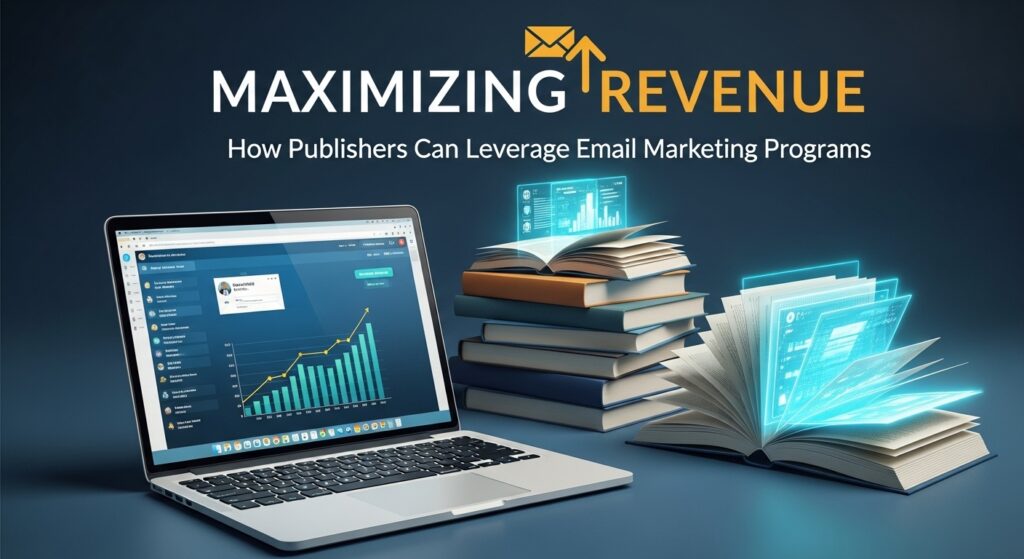Email marketing remains one of the most reliable and effective tools for publishers looking to maximize their revenue streams. By harnessing the direct communication channel that email provides, publishers can foster stronger relationships with their readership. Effective email marketing strategies can lead to increased website traffic, higher subscription rates, and burgeoning ad sales.
Understanding the Power of Email Marketing for Publishers
Alt text: A person looking at data on a computer equipped with email marketing programs for publishers
Email marketing offers publishers a strategic avenue to directly reach their audience with personalized messages. Considering the volume of content available online, it’s crucial for publishers to cut through the noise and engage with their readers on a more intimate level. Emails can deliver tailored content, updates, and offers that speak directly to the interests of subscribers, increasing the likelihood of their continued engagement.
For publishers, the power of email marketing lies also in its cost-effectiveness and measurable outcomes. Unlike some other forms of marketing, email campaigns are relatively inexpensive to run and provide clear analytics, such as open rates, click-through rates, and conversion metrics, allowing publishers to assess their impact precisely. This data-driven approach enables continuous optimization and a clear understanding of ROI.
Furthermore, by leveraging sophisticated email marketing programs for publishers, content creators can automate their communications, segment their audience, and schedule content releases. With programs like PostUp, delivery can be synchronized with audience behaviors and preferences, which improves the chances of emails being opened and acted upon.
Emails can also serve as a testing ground for content strategies. Publishers can experiment with different subject lines, content formats, and delivery times to determine what resonates best with their audience.
Crafting Impactful Email Content to Engage Subscribers
Alt text: A hand holding an envelope that represents email marketing facilitated by email marketing programs for publishers
To engage subscribers, publishers must create email content that is compelling, relevant, and valuable. Every email should feel like a natural extension of the publisher’s brand, maintaining the same tone of voice and quality as the content found on their primary platforms.
Personalization is key to impactful email content. By addressing subscribers by name and tailoring content according to their preferences, publishers demonstrate a commitment to their audience’s interests. Segmentation tools enable the crafting of targeted messages for different subscriber groups, making each email feel bespoke and increasing engagement rates.
Visual elements and a responsive design also play a crucial role in capturing subscribers’ attention. The inclusion of high-quality images, videos, or infographics can significantly improve the appeal of the email. Moreover, with more readers accessing their emails on mobile devices, ensuring that emails render correctly on different screens is essential to maintaining a professional image and seamless user experience.
Lastly, publishers should include clear calls-to-action (CTAs) in their emails. Whether encouraging subscribers to read an article, sign up for a webinar, or take advantage of a subscription offer, distinct and persuasive CTAs guide readers towards the next steps and help to convert casual readers into more invested followers or paying customers.
Integrating Email Marketing With Other Revenue Channels
Email marketing should not exist in isolation for publishers seeking to maximize their revenue. It works best when integrated with other channels, such as social media, websites, and offline activities. This multi-channel approach ensures that messages are reinforced across platforms, increasing the touchpoints with the audience and providing multiple avenues for conversion.
For example, publishers can use email marketing to direct subscribers to their social media profiles, thereby increasing their follower base and allowing for more dynamic engagement. Conversely, social media can be used to promote newsletter sign-ups, expanding the email subscriber list. These cross-promotions increase the overall reach and effectiveness of a publisher’s marketing efforts.
Synchronization between email marketing and content release schedules can also drive traffic back to the publisher’s platform. By timing emails to coincide with new content, events, or product launches, publishers create a sense of urgency and anticipation, encouraging readers to visit their site to learn more or to make a direct purchase.
Additionally, email can be used to recover potentially lost revenue, such as through abandoned shopping cart reminders for e-commerce operations or renewal notices for expiring subscriptions. Providing timely reminders and incentives via email can re-engage users who might otherwise have lapsed, therefore contributing to a healthier bottom line.
Altogether, the strategic use of email marketing presents a formidable opportunity for publishers to enhance their connection with audiences and boost their revenue. By crafting personalized content, segmenting audiences, integrating across platforms, and rigorously measuring campaign outcomes, email marketing will continue to prove its worth as an indispensable tool in the publishing industry’s arsenal.






